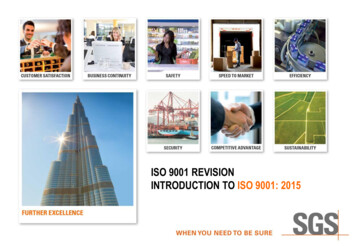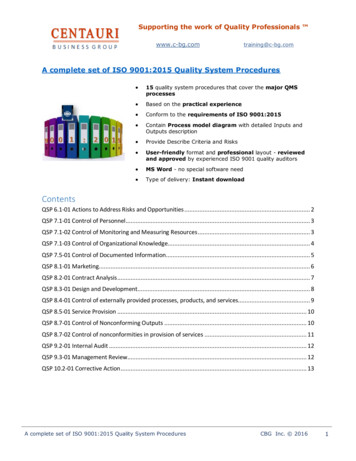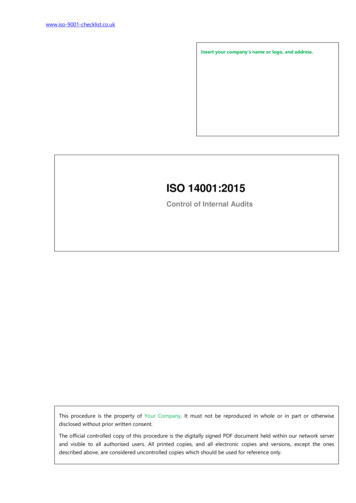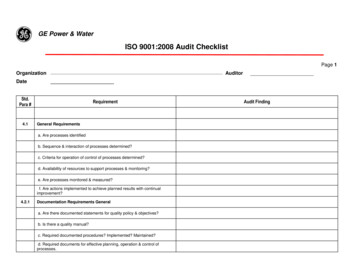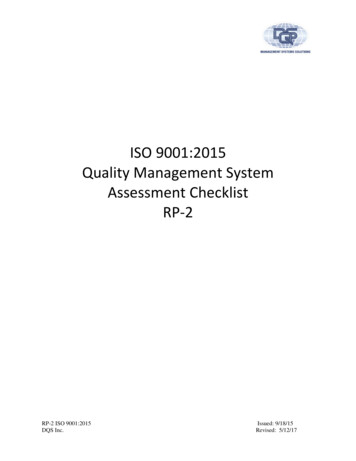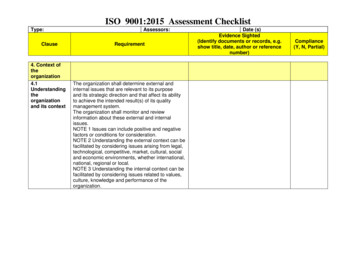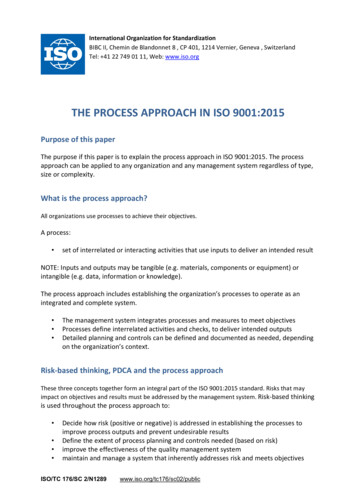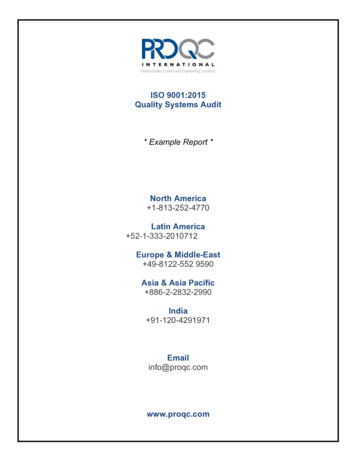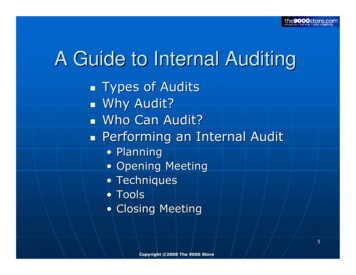
Transcription
A Guide to Internal Auditing Types of AuditsWhy Audit?Who Can Audit?Performing an Internal Audit PlanningOpening MeetingTechniquesToolsClosing Meeting5Copyright 2008 The 9000 Store
Who Can Audit? Auditors typically represent the people employed by theorganization and must be objective and dedicated to thisimportant task. ISO 9001 Par. 8.2.2 requires that “selection of auditorsshall ensure objectivity and impartiality of the auditprocess” or Auditors cannot audit their own work. There are important techniques that they must be awareof when they prepare for and perform the audits. Internal auditors must become familiar with the auditingprocess.11Copyright 2008 The 9000 Store
Performing an Internal Audit»OverviewInternal Auditor training covers:-The purpose and scope for auditing the QMS to the ISO Standard-The requirements for planning and scheduling internal audits-The practices followed during the internal audit-including opening and closing meetings-How to develop check lists and questions for the various audits-How to interview and what to look for when asking questions-Reporting on the internal audit and follow-up activities.12Copyright 2008 The 9000 Store
Performing an Internal Audit» Planning (Cont’d)AnnualscheduleChecklistAnnual schedule approved by top managementPrepare checklists or questions for the activities to be audited.Obtain relevant documents to be used.NotifyauditeeAgree to an itinerary that meets the needs of the auditee and theauditor.Meeting withauditeeOpening meeting with auditee representatives to set the stage forthe audit.ConductThe AuditReviewfindingsCollect evidence and answers to questions or checklist items.Ensure audit evidence is correct. Discuss the non conformances foundwith auditee to eliminate misunderstandings15Copyright 2008 The 9000 Store
Performing an Internal Audit»TechniquesMore about audits and auditing techniques Auditees must be made comfortable during interviewsand there are techniques that are used by auditors tomake it easier. Experienced auditors learn to read body language andother non verbal clues. The auditor will question the auditee, listen to theanswers, and anticipate the answer to the question. It is necessary to listen critically, analyze the answer,record the information and at the same time prepare thenext question.Copyright 2008 The 9000 Store17
ISO 9001 Par. 8.2.2 requires that . Internal Auditor training covers:-The purpose and scope for auditing the QMS to the ISO Standard-The requirements for planning and scheduling internal audits-The practices followed during the internal audit -including opening and closing meetings-How to develop check lists and questions for the various audits-How to interview and what to look for when .
